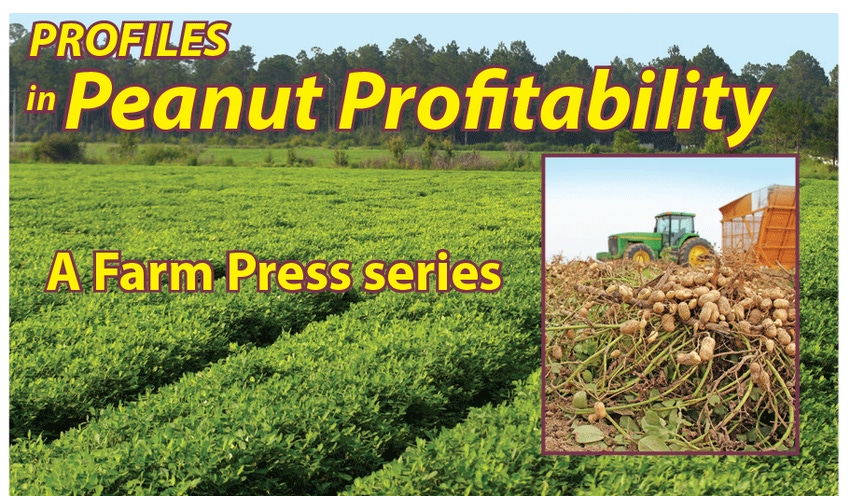April 16, 2015

The history of the U.S. peanut industry makes for a great story, especially considering the extraordinary advances made in recent years.
“If we go all the way back to the 1920s up through the 1950s, the U.S. was averaging less than 1,000 pounds per acre. And then in the 1970s, there was the introduction of the Florunner peanut from the University of Florida. But for the last four to five years, the U.S. has averaged about 3,700 pounds per acre,” says Marshall Lamb, research director for the National Peanut Laboratory in Dawson, Ga., and advisor for the Farm Press Peanut Profitability Award Program.
“It’s a great story, and it’ll really be interesting to see where we eventually end up in terms of yields, because it’s definitely a trend that’s going up, and I think it’ll continue,” says Lamb.
Harvested peanut acreage in the United States has been in an up and down cycle since 2002, when a new farm bill was passed, and the old quota system was eliminated, he says.
“In terms of acreage, it has basically been a couple of up years followed by down times and then up again. Our biggest year in terms of acreage was 2012, followed by decreases. But from a yield standpoint, it has been a great story when we look at individual years.”
From 2008 to about 2011, U.S. peanut yields were averaging approximately 3,300 to 3,400 pounds per acre, says Lamb. “And then in 2012, we broke the all-time record yield for peanuts in the United States at 4,272 pounds per acre. And if we had not broken the yield record in 2012, we would have broken it in 2013, with 4,006 pounds per acre. And if we had not broken it in 2012 and 2013, we would have broken it in 2014, with 3,932 pounds per acre. So we’ve seen tremendous yields during the past three years across the entire United States.”
Another great chapter in the story of the U.S. peanut industry is how the export market has progressed in recent years, says Lamb.
“For the first time in a long time, the United States has the cheapest edible peanut in all of the international markets. And we’re moving a lot of this product. Our competitor’s peanuts, including China and Argentina, are more expensive than U.S. peanuts, and none of them can touch the quality of the U.S. peanut, which is why we have such good numbers in the export market.”
Going back to 2012, the U.S. exported only about 170,000 tons of peanuts, on a kernel basis, he says.
“In 2013, we exported 407,000 metric tons, and last year, we exported 430,000 tons. Based on deliveries to date, we’ll increase this year and continue going up. These are good times now for the export market. If you look at what we’re clearing now compared to what we cleared in the export markets a couple of years ago, if we keep doing this, it hopefully will continue to drive down the supply of peanuts.”
A lot of the countries where the U.S. is exporting peanuts are using them primarily for oil, says Lamb. “But they’re starting to consume peanuts as peanuts, and they’re starting to like them. The consumption of whole peanuts in these countries is going up. A lot of great things have been accomplished in export promotions in just a few short years, and this entire industry is benefiting from this work.”
Significant contributions
It’s obvious that the U.S. peanut industry has made great strides to achieve the status it enjoys today, and like any great industry, it wouldn’t be where it is without the contributions of men and women who have devoted most of their professional lives to a singular pursuit of excellence.
For the next few weeks, the Farm Press “Profiles in Peanut Profitability” editorial series, sponsored by DuPont, will take an up-close and personal look at a selected few of these individuals. These are people who remain on the “front lines” of the various segments of the peanut industry, and who continue to advance the production, processing and marketing of a product that offers unparalleled nutritional value to consumers throughout the world.
The stories in this series will focus equally on the personalities and backgrounds of these individuals and on the work they have done and continue to do on behalf of the peanut industry.
These stories will explore how these industry leaders came to devote their lives to peanuts and examine their thoughts on what the future holds.
This series by no means is intended to be an exhaustive listing of all those who have contributed greatly to making the United States the No. 1 peanut producer in the world. It merely represents a small sample of the many who have devoted their lives and careers to this endeavor.
About the Author(s)
You May Also Like




